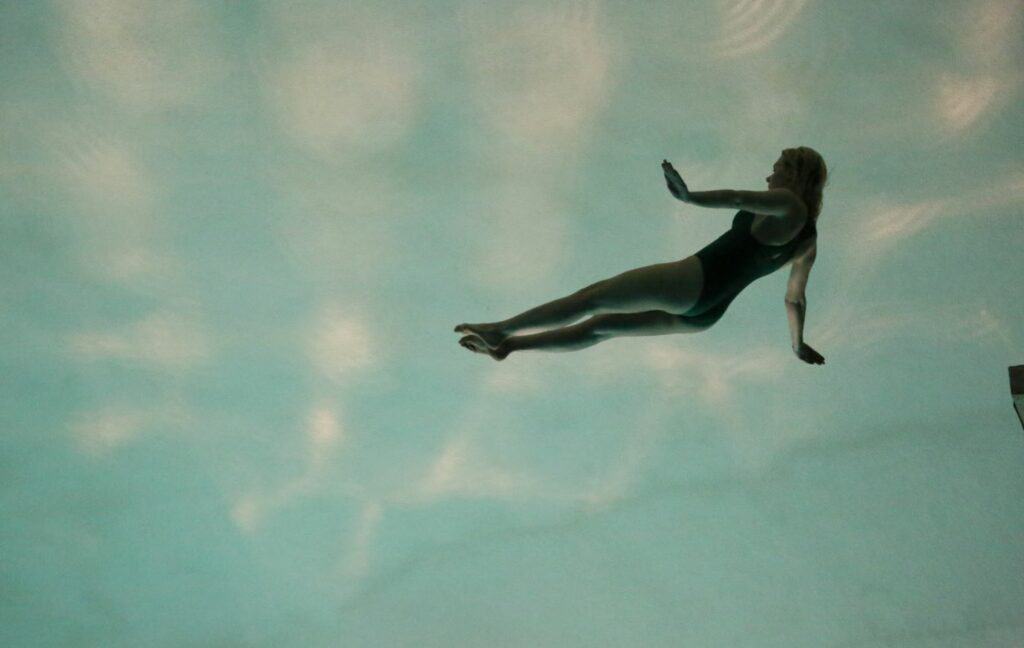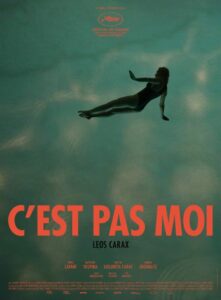Leos Carax’s Annette was one of the highlights of the 2021 Cannes Film Festival edition. Since he is not the most prolific director, it was a pleasant surprise when it was announced that he would present a new film this year called C’est pas moi. However, the excitement was muted when it became clear that the new film would only be 40 minutes long. Initial reports alluded to a biographical work of some kind. The project’s origin was when The Centre Pompidou was preparing an exhibition where they asked the director the question: where are you at, Leos Carax?
While the exhibition ultimately didn’t happen, this medium-length film draws on the director’s filmography to create visual essays and more or less authentic autofiction to conjure an imag(e)inary answer. It goes without saying that Denis Lavant plays a major part, as he has done throughout Carax’s career. Other major collaborators on the film include director of photography Caroline Champetier and production designer Florian Sanson, both of whom worked on Holy Motors (2012) and Annette. Instead of being exhibited at Centre Pompidou, the film opened in the Première section of this year’s Cannes Film Festival since it was too short to be included in the competition. What kind of work was it that the Salle Debussy audience was able to witness?

C’est pas moi – Autoportrait en mai
The first thing that strikes the spectator is how Godardian the film is. C’est pas moi shares several stylistic traits with Godard’s later works combined with the youthful enthusiasm of his early films. It is a cinematic essay filled with archive images (personal and historical) with overlapping letters on-screen, which intentionally leads the viewer’s thoughts to cinema’s boldest cinematic theorist. Another thing the two have in common is the disdain for current cinema and the way new inventions are being (mis)used. For the creator of Éloge de l’amour (2001) and Adieu au langage (2014), part of the reaction was to find fruitful ways of expanding the possibilities of cinema, in the case of the latter, even with the dreaded 3D.
Carax’s overall design is somewhat different, with all the biographical parts with childhood heroes like Tintin and David Bowie still; the work is filled with startling juxtapositions that will not be revealed here. Several celebrities from the film world are referenced, but not always in the most obvious context. Roman Polanski will suffice as a single example. Watching C’est pas moi at a festival such as Cannes is a paradoxical experience. When Carax laments that the moving image has lost its divinity, this year’s unfathomably awful edition of the festival provides ample examples to prove his point. On the other hand, his own film is an exhilarating watch, proving what cinema can achieve in the right hands.
Ending with a preposition
I have not divulged too much of what is going on in C’est pas moi. I encourage everyone to watch Carax’s latest offering, and I hope that the film will play at numerous festivals and that there are possibilities for some kind of distribution as well, possibly with Godard’s last shorts. Carax’s projects are all too rare. However, according to different sources, he has a new project in the works, which will feature Adam Driver. One can only hope that this story is accurate since the French director is one of the very few working filmmakers today whose films one looks forward to.
It would be perfect if the director could find a better outlet for his next film than Cannes, but that might be hoping for too much.
C'est pas moi

Director: Leos Carax
Date Created: 2025-09-16 09:21
5
Pros
- Perfect concept
- Brilliant execution
Cons
- None
